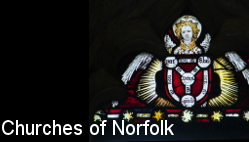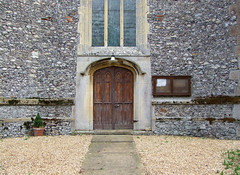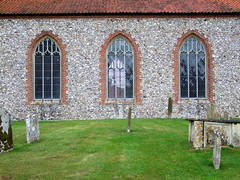| |
|
St Mary,
Hillington A tall, polite church on the edge of the
Sandringham estate, the crisp walls and neatly mown
churchyard all of a piece on this bright July day. The
construction is in a curious mixture of blue carstone,
clunch and flint, as if it couldn't quite decide which
geological region to be built in. Even more curious are
the windows in the south aisle, because their tracery is
made of cast iron.
You enter
the church from the west, beneath the tower, and the
first impression is of how deliciously full of light it
is. Apart from the bright west window of 1840 by
Wilmshurst & Oliphant, depicting Christ flanked by St
Peter and St Paul, under which you enter, and another
rather decaying window by Hardman & Co of 1860
depicting the adoration of the Shepherd and the Magi,
which is in any case hidden behind the organ, this
church's glass is entirely clear. Above, the ceiling
creates a lovely acoustic. I wonder what it conceals?
The Browne family and the Ffolkes family of Hillington
Hall left their mark here. Travelling northwards, this
was the first substantial collection of memorials we had
come across in a church today. The most memorable is in
the south aisle, to Lucretia Georgiana Browne West. She
died in Mumbai, India in 1828, eleven days after giving
birth to a baby boy who lived only a few hours. She is
shown cradling the poor little fellow, disconsolate with
grief.
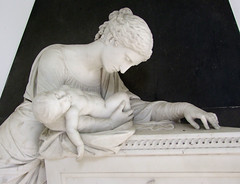 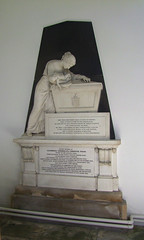 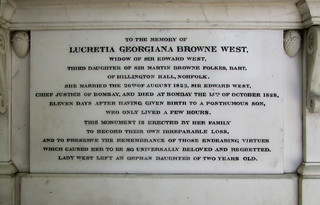
Another
substantial memorial in the chancel is to Sir William
Browne, President of the Royal College of Physicians. The
most interesting of the Ffolkes memorials are in the form
of encaustic tiles down parts of the north and south
walls, remembering themselves and their workers and
servants in democratic fashion. One is to Harold Ffolkes,
son of the Rector here, who drowned at King's Weir in
Oxford in a brave attempt to save his Friend. It
is worth noting in passing that these tiles are more than
a century old, but they look as fresh and clear today as
they did when they were first erected. It seems a shame
that the fashion did not catch on, although you do come
across such things from time to time in various places.
| The
family have gone now, and so has the Hall. A
carstone Gothic pile of the 1830s, it was
demolished in 1946. But the church remains, and
it was good to get that sense that it meant as
much to its past as to its present and future.
More a touchstone than a time capsule, a reminder
of how we came to be. My ancestors, of course,
would have been the Ffolkes's servants and
workers, but it is nice to think they might have
been remembered in encaustic tiles. When I last
came this way in 2005, I found the church locked,
in contrast with the other Sandringham estate
churches, and there wasn't even a keyholder
notice. Well, there has been a slight
improvement, because I am told that the church is
now open on a Saturday, and if you find it locked
you can borrow a key from the tall modern house
to the north of the church.
|
|
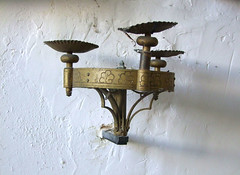 |
|
|
|
